Il destino del mondo si gioca oggi nell’Oceano Indiano? Dominato dall’arco dell’Islam (che varia dalla Somalia all’Indonesia attraverso il Golfo e l’Asia centrale), la regione è sicuramente diventata il nuovo centro di gravità strategico del pianeta. Questo nuovo capitolo della nostra serie “Comprendere il mondo musulmano“, ci accompagna in una crociera. Mohamed Hassan spiega come lo sviluppo economico della Cina, che sconvolge l’equilibrio delle potenze mondiali e fa uscire il Sud dalla sua dipendenza dell’Occidente. Ci rivela anche le strategie attuate dagli Stati Uniti per cercare di mantenere la leadership. E perché l’impero USA è tuttavia destinato all’estinzione. Infine, ci ha previsto la fine della globalizzazione. Resta la questione se questa rapina globale finisca senza problemi, o se i rapinatori liquidaranno gli ostaggi, in questa avventura.
Serie “capire il mondo musulmano” .
Dal Madagascar alla Thailandia, passando per la Somalia, il Pakistan o la Birmania, il bacino dell’Oceano Indiano è particolarmente agitato! Come spiega queste tensioni?
L’equilibrio del potere nel mondo è in subbuglio. E la regione dell’Oceano Indiano è al centro di questa tempesta geopolitica.
Di quale zona parliamo, esattamente?
Si va dalla costa orientale dell’Africa al sud dell’Asia. Con un lago (il Mar Caspio) e tre fiumi: il mare del Golfo, Mar Rosso e il Mar Mediterraneo.
Perché questa regione è così importante? Primo, perché il 60% della popolazione mondiale è concentrata in Asia ed è collegata all’Oceano Indiano. Da sole, Cina e India assorbono il 40% della popolazione mondiale. Inoltre, l’affermazione economica di queste due potenze, avviene nell’Oceano Indiano, una zona particolarmente strategica. Oggi, il 70% del traffico mondiale di petrolio passa attraverso questo oceano. Tale percentuale dovrebbe aumentare, per le crescenti esigenze di entrambi i paesi. Inoltre, il 90% del commercio mondiale è trasportato da navi portacontainer e l’Oceano Indiano riceve solo la metà di questo traffico.
Come previsto dal giornalista statunitense Robert D. Kaplan, stretto consigliere di Obama e del Pentagono, l’Oceano Indiano diventerà il centro di gravità strategico del mondo del 21° secolo. Non solo questo oceano è un passaggio fondamentale per le risorse energetiche e commerciali tra il Medio Oriente e Asia orientale, ma è anche al centro degli assi di sviluppo economico tra la Cina, da una parte, e Africa e America Latina, dall’altra.
L’ascesa di queste nuove relazioni commerciali significa che il Sud si sta liberando dalla sua dipendenza dall’Occidente?
In effetti, alcune cifre sono impressionanti: il commercio Cina – Africa è aumentato di venti volte dal 1997. Quello con l’America Latina di quattordici in meno di dieci anni! India e Brasile, inoltre, collaborano più strettamente con il continente africano. Sotto la spinta della Cina, gli investimenti Sud-Sud sono aumentati rapidamente. Dopo essere stata depredato e saccheggiato per secoli, il Sud finalmente esce dal suo torpore.
Perché così tanti paesi dell’Africa e dell’America Latina si stanno rivolgendo alla Cina?
Per secoli, l’Occidente s’è impegnato in un vero e proprio saccheggio delle risorse del Sud, ostacolando i paesi in via di sviluppo, soprattutto attraverso un debito odioso. Ma la Cina sta offrendo prezzi migliori per le materie prime, e investe nei paesi in via di sviluppo per sviluppare infrastrutture, programmi sociali o progetti di energia pulita. Ha anche abolito i dazi doganali all’importazione di molti prodotti africani, facilitando notevolmente la produzione e il commercio di questo continente. Infine, ha anche annullato il debito dei paesi più poveri dell’Africa.
Inoltre, a differenza delle potenze occidentali, la Cina non interferisce nella politica interna dei suoi partner economici. In una conferenza ministeriale Cina-Africa, il premier cinese Wen Jiabao ha riassunto la politica del suo paese: “Il nostro commercio e la nostra cooperazione economica sono basate sul reciproco vantaggio. (…) Non abbiamo mai posto condizioni politiche all’Africa e non lo faremo mai neppure in futuro.” Che differenza dalle potenze occidentali che hanno continuamente fatto e disfatto i governi in Africa! Il Sud ha sete d’indipendenza: l’alleanza con la Cina è una reale opportunità per placare quella sete.
Infine, i paesi capitalisti occidentali versano in grave crisi economica, che ha ripercussioni sulla Cina, ma che non gli impedisce di mantenere una forte crescita. In questa situazione, è normale che i paesi africani e latinoamericani si stiano rivolgendo al più forte partner economico. Come indicato sul Financial Times, in precedenza, il Brasile è stato colpito dalla crisi negli Stati Uniti. Ma nel 2009, la sua economia ha continuato a crescere, e non è un caso che la Cina sia diventata il suo principale partner economico.
Questa Sud-Sud sfida l’egemonia occidentale. Gli Stati Uniti e l’Europa lasciano la Cina invadere il loro territorio?
Nel complesso, lo sviluppo di questo asse Sud-Sud presenta due principali minacce per gli interessi delle potenze imperialiste, e in particolare per gli Stati Uniti. In primo luogo, si ritira dalla zona d’influenza dei paesi occidentali ricchi di materie prime. In secondo luogo, permette alla Cina di avere tutte le risorse necessarie per continuare il suo folgorante sviluppo. In piena crescita, Pechino sta raggiungendo la prima potenza economica: gli Stati Uniti. Secondo Albert Keidel, ex economista della Banca Mondiale e membro del Consiglio Atlantico, la Cina potrebbe andare in testa nel 2035.
Oggi, Washington cerca quindi di contenere l’emergere della Cina per mantenere la leadership. E il controllo dell’Oceano Indiano è al centro di questa strategia. La lotta contro la pirateria somala è, in realtà, un pretesto per la posizione delle forze NATO nell’Oceano Indiano, e per mantenere il controllo delle potenze occidentali in questo bacino. Anche il Giappone ha iniziato la costruzione di una base militare a Gibuti, per la lotta contro la pirateria.
Parliamo ora di pirati, o dei terroristi islamici. Minaccia o pretesto?
Non sto dicendo che non vi è alcuna minaccia. Semplicemente, le potenze occidentali li strumentalizzano per i loro interessi strategici nella regione. Come s’è sviluppata la pirateria in Somalia? Da oltre venti anni, non vi è nessun governo in questo paese. Alcune società europee hanno colto l’occasione per venire a saccheggiare il pesce al largo delle coste, e gli altri a scaricare rifiuti tossici. In queste condizioni, i pescatori somali, inabili al lavoro, si sono impegnati nella pirateria per sopravvivere. Naturalmente, il fenomeno ha assunto un’altra dimensione da allora. Ma se si vuole risolvere il problema della pirateria, lo si deve attaccare alla radice e ristabilire un ordine politico legittimo in Somalia. Ordine che gli USA non hanno voluto finora…
Sì, e la loro politica sciocca potrebbe creare problemi ben più gravi. Infatti, dobbiamo sapere che la Somalia è il centro storico dell’Islam in Africa orientale. In precedenza, l’influenza dei capi religiosi somali era molto importante. Avevano portato l’islam sunnita fino in Mozambico. Inoltre, quando gli sciiti dell’Oman estesero la loro influenza in Africa orientale, nel corso del 18° secolo, hanno pesantemente influenzato la cultura della regione, ma non furono in grado di convertire la popolazione allo Sciismo.
Oggi, un movimento islamico potrebbe svilupparsi a causa degli errori commessi dagli Stati Uniti nel Corno d’Africa. E se i leader di questo movimento utilizzeranno questa storia comune per raccogliere membri in tutta l’Africa orientale, e difendere la Somalia come un centro dell’Islam africano, la minaccia diventerà molto grave per gli Stati Uniti!
L’Oceano Indiano è sormontato dalla “arco dell’Islam“, che si estende dall’Africa orientale all’Indonesia, attraverso il Golfo e l’Asia centrale. Come questo oceano, la culla del potere musulmano, è finito sotto il dominio delle potenze occidentali?
Prima dell’apertura del Canale di Suez nel 1869, quattro grandi potenze dominavano la regione: l’impero turco ottomano, i persiani (oggi Iran), quella dei Moghul (l’impero musulmano che fiorì in India) e la Cina. Attraverso l’Oceano Indiano, il commercio aveva messo in contatto i popoli musulmani con altri popoli della regione, e ha contribuito a diffondere l’Islam in Cina e in Africa orientale. Così l’arco di Islam è stato formato e l’Oceano Indiano è stato ampiamente dominato da potenze musulmane.
a un evento importante si è verificato in India, smorzando la dominazione europea sulla regione: la ribellione indiana nel 1857. I sepoy erano soldati indiani al servizio della compagnia delle Indie inglese. Le ingiustizie inflitte dai loro datori di lavoro hanno portato a una ribellione che, molto rapidamente, ha portato a un grande movimento popolare. E’ stata una rivolta molto violenta, i sepoy massacrarono molti inglesi, ma che infine riuscirono a reprimere il movimento. In Gran Bretagna, una campagna propagandistica denunciava la barbarie dei sepoy. Karl Marx analizzò questo evento e ne trasse le conclusioni: “I loro metodi sono barbari, ma dobbiamo chiederci chi li ha portati a mostrare una tale brutalità: i coloni britannici che si stabilirono in India.”
Oggi stiamo vivendo la stessa cosa con gli attentati dell’11 settembre. Tutta l’opinione pubblica occidentale è portata ad indignarsi per i metodi barbari dei terroristi islamici. Ma non si fanno domande soprattutto sui fattori che hanno dato origine a questa forma di terrorismo, che ci rimanda alla politica estera degli Stati Uniti in Medio Oriente, durante gli ultimi cinquant’anni.
Infine, la soppressione della ribellione ha avuto due importanti conseguenze: in primo luogo, la colonia indiana, precedentemente gestita da società private, ufficialmente passò sotto l’amministrazione del governo britannico. Poi, la Gran Bretagna depose l’ultimo leader dei musulmani dell’India, l’imperatore Mogul Muhammad Bahâdur Shâh. Fu esiliato in Birmania, dove finì i suoi giorni.
Undici anni dopo la ribellione indiana, si aprì il canale di Suez, che collega il Mediterraneo e l’Oceano Indiano. Una famosa spintarella per la dominazione europea di questo oceano?
Assolutamente. La colonizzazione europea nel bacino dell’Oceano Indiano si accelerò allora, la Francia e la Gran Bretagna si presero Gibuti, l’Egitto e Bahrein per proteggere India dall’espansione russa.
Poi, dopo molti cambiamenti nell’imperialismo nel 19° secolo (unificazione di Germania e Italia, la spartizione dell’Africa tra le potenze europee), l’impero del sultanato d’Oman fu l’ultima potente forza araba nell’Oceano Indiano. Per rovesciarlo, gli Europei montarono una campagna di propaganda sul fatto che gli omaniti sfruttavano gli africani come schiavi. Con il pretesto della lotta contro la schiavitù, l’Europa ha mobilitato le sue truppe nell’Oceano Indiano e rovesciò il sultanato di Oman. Così, la dominazione occidentale sull’Oceano Indiano divenne totale.
Ma oggi, questa posizione dominante è messa in discussione dalle potenze emergenti dell’Asia e dell’Oceano Indiano, e potrebbe diventare il teatro di una competizione sino-statunitense. Gli Stati Uniti sono in declino e la Cina in spettacolare ascesa, come Washington potrebbe bloccare il suo principale concorrente?
Il Pentagono è ben consolidato nella regione: una enorme base militare a Okinawa (Giappone), accordi con le Filippine, con il pretesto della lotta contro il terrorismo, ottimi rapporti con i militari indonesiani che sono stati addestrati da Washington a uccidere milione di comunisti e a stabilire una dittatura militare negli anni ’60…
Inoltre, gli Stati Uniti possono contare sulla loro base militare di Diego Garcia. L’isola di corallo, situata nel cuore dell’Oceano Indiano, sarebbe più di un posto per vacanze da sogno, con una spiaggia di sabbia bianca e le palme. Tuttavia, la storia di questa isola è molto meno affascinante, nel 1965 Diego Garcia e il resto delle Isole Chagos, furono incluse nel territorio britannico nell’Oceano Indiano, nel 1971, e tutti gli abitanti dell’isola Diego Garcia vennro espulsi dagli Stati Uniti, che costruirono una base militare: è da questa posizione estrategica che Washington ha condotto alcune operazioni nel contesto della guerra fredda, e delle guerre in Iraq e in Afghanistan. Oggi, nonostante i giudici inglesi abbiano dato loro ragione, agli abitanti di Diego Garcia è impedito di ritornare alla loro isola da parte del governo del Regno Unito.
Gli Stati Uniti hanno quindi una forte presenza militare nella regione. Da parte sua, la Cina ha due talloni d’Achille: lo Stretto di Hormuz e quello di Malacca. Il primo (tra Oman e Iran) è l’unico accesso al Golfo Persico ed è largo solo 26 km, nel punto più stretto. Circa il 20% del petrolio importato dalla Cina attraversa questo luogo. L’altro punto debole, lo Stretto di Malacca (tra la Malaysia e l’isola indonesiana di Sumatra), è molto trafficato e pericoloso, ma è il principale punto di passaggio per le merci provenienti dall’Oceano Indiano per la Cina. Circa l’80% delle importazioni di petrolio della Cina passa attraverso lo stretto. Gli Stati Uniti sono ben consolidati in questo settore, potrebbero bloccare lo stretto di Malacca, nel caso un conflitto dovesse esplodere con la Cina. E sarebbe un disastro per Pechino.
Questo spiega perché la Cina cerca di diversificare le proprie fonti di approvvigionamento energetico?
Assolutamente. Di fronte a questo grave problema, la Cina ha sviluppato diverse strategie. Il primo è rifornirsi in Asia centrale. Un gasdotto che collega il Turkmenistan alla provincia cinese del Xinjiang, da oggi al 2015, dovrebbe fornire 40 miliardi di metri cubi all’anno, quasi la metà del consumo attuale della Cina. Un oleodotto collega la Cina anche al Kazakistan, trasportando petrolio dal Mar Caspio.
C’è anche l’Asia meridionale. Pechino ha firmato accordi con il Bangladesh per ottenere gas e petrolio. Ha recentemente annunciato la costruzione di un oleodotto e un gasdotto, che forniranno rispettivamente, dal Myanmar (Birmania), 22 milioni di tonnellate di petrolio e 12 miliardi di metri cubi di gas all’anno.
Infine, la terza strategia cinese, chiamata “filo di perle” è quello di costruire porti in paesi amici, lungo la costa nord dell’Oceano Indiano. Obiettivo: avere un traffico navale autonomo in questa regione autonoma. Di questa strategia fa parte la costruzione del porto oceanico di Gwadar, nel Pakistan. Questo tipo di porto è adatto al traffico delle navi portacontainer, e la Cina dovrebbe costruirne altri, soprattutto in Africa. Si noti che alcune navi portacontainer che trasportano merci verso la Cina dall’America Latina, sono troppo grandi per raggiungere l’Oceano Pacifico attraverso il Canale di Panama. Esse quindi passano attraverso l’Oceano Atlantico e l’Oceano Indiano, prima di raggiungere la Cina. Durante questo viaggio, non dovrebbero necessariamente attraversare l’Europa, come avviene adesso, e passare nell’Oceano Indiano attraverso il Canale di Suez. Come parte dell’asse Sud – Sud, queste navi portacontainer potrebbero, invece, transitare in Africa, collegando l’America Latina e l’Asia.
Ciò avrebbe conseguenze importanti per l’Africa. Paesi come Mozambico, Somalia, Sud Africa e Madagascar potrebbero far parte di questa grande rete dell’Oceano Indiano. Se vogliono sviluppare nuovi porti come Gwadar, sarebbe un enorme boom economico in questa regione dell’Africa. Nel frattempo, l’attività dei principali porti europei come Marsiglia e Anversa declinerà. Collegare l’Africa al mercato asiatico attraverso l’Oceano Indiano, sarebbe un vantaggio per il continente. Nelson Mandela, quando era presidente del Sud Africa, ha desiderato vedere realizzati questo progetto, ma gli Stati Uniti e in Europa si opposero. Oggi, la Cina ha i mezzi per assumere la guida. Creato l’asse Sud-Sud: i paesi del terzo mondo sfuggiranno alle divisioni instauratesi tra loro e collaboreranno sempre di più. Il mondo è in fermento!
Come la Cina è diventata una tale potenza in così poco tempo?
Fino al 19° secolo, la Cina era una grande potenza. Vendeva prodotti di buona qualità e aveva più valuta estera, oro e argento delle potenze europee. Ma il paese non s’è mai aperto al commercio internazionale. C’erano solo pochi insediamenti sulle coste, con disappunto della Gran Bretagna. Quest’ultima, in piena rivoluzione industriale, cercava di vendere una grande quantità dei suoi prodotti in tutta la Cina.
Così, quando il viceré Lin Zexu ordinò la distruzione, nel 1838, di casse di oppio che la Gran Bretagna importava illegalmente in territorio cinese, i britannici trovarono il pretesto per la guerra. Lord Melbourne mandò una spedizione a Canton, fu la prima guerra dell’oppio. Si concluse quattro anni dopo. Sconfitti, i cinesi furono costretti ad aprire ulteriormente il loro paese al commercio internazionale.
Ma le potenze imperialiste voleva penetrare ancor più verso l’interno della Cina, al fine di vendere i loro prodotti. E chiedevano la legalizzazione della vendita dell’oppio, nonostante la devastazione che ha causato nella popolazione. Poiché questo business molto redditizio permetteva loro di essere pagati in lingotti d’argento, ebbero una bilancia commerciale favorevole. Di fronte al rifiuto dell’Impero Cinese, Gran Bretagna e Francia avviarono la “seconda guerra dell’oppio” (1856-1860). In ginocchio, la Cina è diventata una semi-colonia delle potenze occidentali. Infine, la vendita dell’oppio fu legalizzata e la Gran Bretagna e gli Stati Uniti vi si dedicarono con molto profitto.
Di tutto ciò non si parla in Europa, dove sembra finalmente di conoscere per nulla la storia della Cina …
Anche altrove. E’ importante capire che queste guerre imperialiste e le distruzioni causate dalle potenze coloniali hanno provocato la morte di oltre cento milioni di cinesi. Alcuni furono presi come schiavi nelle miniere del Perù, dove le spaventose condizioni di lavoro causarono numerosi suicidi collettivi. Altri furono usati per costruire le ferrovie negli Stati Uniti. Mentre migliaia di bambini cinesi vennero rapiti per scavare i primi pozzi di petrolio della Shell in Brunei, mentre le tecniche di estrazione meccanizzate non erano ancora pronte. È stato un periodo terribile. Nessun popolo ha sofferto così tanto. Bisognerà attendere il 1949 e la rivoluzione guidata da Mao, per vedere la Cina diventare indipendente e prospero.
Alcuni attribuiscono questa crescita enorme della Cina a Deng Xiaoping: solo le prese di distanze dal maoismo e l’apertura della Cina al capitale straniero avrebbe consentito al paese di svilupparsi…
Si dimentica che la Cina di Mao era già in continuo sviluppo tra il sette e il dieci per cento! Naturalmente, Mao ha fatto degli errori durante la Rivoluzione Culturale. Ma ha anche trovato un paese di un miliardo di persone in estrema povertà. E ha permesso alla Cina di diventare uno stato indipendente dopo un secolo di oppressione. E’ quindi sbagliato attribuire lo sviluppo solo alla politica della porta aperta della Cina di Deng Xiaoping. Partendo dal nulla, questo paese ha continuato a crescere, a partire dalla rivoluzione del 1949. E questo compito non è completato.
Ovviamente, l’apertura al capitalismo attuale solleva numerosi interrogativi sul futuro della Cina. Ci saranno sicuramente contraddizioni tra le diverse forze sociali, con il rafforzamento di una borghesia locale. La Cina potrebbe diventare un pieno paese capitalista, ma non dominato dall’imperialismo. Ma in entrambi i casi, gli Stati Uniti cercheranno di evitare che il paese diventi una grande potenza con i mezzi per resistergli.
Giustamente, alcuni sostengono che la Cina stessa è diventata una potenza imperialista, esportando il suo capitale ai quattro angoli del pianeta e compiendo prospezioni in tutto il Sud per ottenere materie prime?
C’era confusione, anche all’interno della sinistra, sulla definizione di imperialismo fatta da Lenin (che ha probabilmente meglio studiato questo fenomeno). Alcuni non considerano che un singolo componente di tale definizione, l’esportazione di capitali all’estero. Certo, grazie alle esportazioni di capitale, le potenze capitaliste si arricchiscono più velocemente, e finiscono per dominare le economie dei paesi meno sviluppati. Ma nel contesto dell’imperialismo, il predominio economico è inseparabile dalla dominazione politica che trasforma il paese in semi-colonia.
In altre parole, se sei un imperialista, è necessario, nel apese in cui esporti capitali, creare il tuo burattino personale, un governo che serva i tuoi interessi. Potete addestrare anche l’esercito della vostra semi-colonia a organizzare i colpi di stato militari, quando il burattino non obbedisce. Ciò è accaduto di recente in Honduras, dove è stato deposto il presidente Manuel Zelaya da un esercito i cui ufficiali sono stati addestrati nelle accademie militari statunitensi. È anche possibile infiltrarsi del sistema politico con le organizzazioni come la CIA, per creare dei collaborazionisti interni. In breve, l’imperialismo si basa su una doppia posizione dominante: economica e politica. L’una non va senza l’altra.
Questo fa una grande differenza con la Cina. Essa non interferisce negli affari politici dei paesi con i quali commercia. E l’esportazione di capitali non è destinata a dominare e soffocare le economie dei paesi partner. Così, la Cina non solo non è una potenza imperialista, ma consente anche ai paesi che subiscono l’imperialismo di liberarsi sconvolgendo la struttura di potere costituita dall’Occidente.
Gli Stati Uniti possono ancora fermare il loro concorrente cinese? Certo, il Pentagono s’è ben stabilitosi nella regione, ma un confronto militare diretto con la Cina sembra improbabile: Washington è ancora impantanato in Medio Oriente e, secondo molti esperti, non sarebbe in grado di vincere un conflitto diretto con Pechino.
In effetti, bombardare e invadere la Cina non è un’opzione plausibile. Gli Stati Uniti hanno quindi sviluppato strategie alternative. La prima è affidarsi agli stati vassalli in Africa, per controllare il continente ed impedire l’accesso della Cina alle materie prime. Questa strategia non è nuova, era stata sviluppata dopo la seconda guerra mondiale, per contenere lo sviluppo del Giappone.
E quali sono oggi i vassalli degli Stati Uniti?
In Nord Africa, c’è l’Egitto. Per l’Africa orientale c’è l’Etiopia. Per l’Africa Occidentale, la Nigeria. Per il sud e per il centro del continente, Washington contava sul Sud Africa. Ma questa strategia è fallita. Come abbiamo visto, gli Stati Uniti non riescono a impedire ai paesi africani di commerciare con la Cina, e hanno perso una grande influenza sul continente. Testimonianza del colpo subito dal Pentagono, è stato quando esso ha cercato invano un paese che ospitasse il quartier generale del suo comando regionale AFRICOM. Tutti gli Stati continentali si sono rifiutati di ospitare questa base. Il ministro della Difesa sudafricano ha spiegato che il rifiuto è “una decisione collettiva africana” e lo Zambia aveva anche risposto al Segretario di Stato USA: “Vorreste avere un elefante in salotto?” Attualmente, la sede del comando regionale per l’Africa è a Stoccarda …! E’ una vergogna per Washington.
Un’altra strategia degli Stati Uniti per controllare l’Oceano Indiano, sarebbe usare l’India contro la Cina per esacerbare le tensioni tra i due paesi. Questa tecnica era stata usata per l’Iran e l’Iraq, negli anni ’80. Gli USA armarono entrambi le parti contemporaneamente, e Henry Kissinger aveva dichiarato: “Lasciate che si uccidano a vicenda!” L’applicazione di questa teoria all’India e alla Cina, porterebbe a prendere due piccioni con una fava, indebolendo le due maggiori potenze emergenti dell’Asia. Inoltre, negli anni ’60, gli Stati Uniti avevano già usato l’India in un conflitto contro la Cina. Ma l’India fu sconfitta e adesso io non credo che i suoi leader farebbero lo stesso errore di andare in guerra contro il loro vicino, per gli interessi di una potenza straniera. Ci sono molte contraddizioni tra Pechino e New Delhi, ma non sono importanti. Questi due paesi emergenti del Terzo Mondo non devono impegnarsi in questo tipo di conflitto, tipicamente imperialista.
Niente da fare, quindi, per gli Stati Uniti in India o in Africa. Ma in Asia orientale, hanno molti alleati. Possono contare su di essi per contenere la Cina?
Ancora una volta, Washington ha fallito, a causa della sua avidità. L’Asia del Sud-Est ha avuto una terribile crisi economica del 1997, causata da un grande “errore” degli Stati Uniti. Tutto è iniziato con una svalutazione della moneta tailandese, che era stato attaccata da speculatori. Di conseguenza, i mercati azionari furono in preda del panico e molte aziende fallirono. La Thailandia, aveva sperato di ricevere il sostegno degli Stati Uniti, era un suo fedele alleato. Ma la Casa Bianca non si mosse. Respinse anche l’idea di creare un Fondo monetario asiatico per aiutare i paesi più colpiti. In effetti, le multinazionali statunitensi hanno beneficiato della crisi asiatica, per eliminare i concorrenti asiatici la cui ascesa li preoccupava.
Infine, fu la Cina che ha salvato la regione dal disastro, decidendo di non svalutare la propria moneta. Una moneta debole aiuta le esportazioni, e se lo yuan era depresso, l’aumento delle esportazioni cinesi avrebbero completamente finito le economie dei paesi vicini, già in cattive condizioni. Quindi, mantenendo il valore della sua valuta, la Cina ha permesso ai paesi della regione e sviluppare le loro esportazioni e di risollevarsi. Mentre molti governi asiatici mantennero una certa amarezza verso Washington, per il suo ruolo in questa crisi, il primo ministro malese ha dichiarato: “La collaborazione con la Cina e il suo alto senso di responsabilità nella regione, ci hanno preservato da uno scenario ancora più catastrofico”.
Da allora, le relazioni economiche tra la Cina e i suoi vicini hanno continuato a crescere. Nel 2007, Pechino è anche diventato il principale partner commerciale del Giappone, che è tuttavia uno degli alleati più strategici degli Stati Uniti in Asia.
Inoltre, la Cina non ha pretese egemoniche nella regione. Gli Stati Uniti credevano che i paesi dell’Oceano Indiano si sarebbero spaventati dalla potenza cinese, e avrebbero cercato di essere protetti. Ma la Cina ha stabilito relazioni con i paesi vicini sulla base del principio di uguaglianza. Da questo punto di vista, gli Stati Uniti hanno, così, perso anche la battaglia in Asia orientale.
Gli Stati Uniti non hanno modo di impedire che la Cina faccia loro concorrenza?
Pare di no. Per crescere, la Cina ha un bisogno vitale di risorse energetiche. Gli Stati Uniti cercano, quindi, di controllare queste risorse e assicurare che non raggiungano la Cina. C’era un obiettivo chiave nelle guerre in Afghanistan e in Iraq, ma sono diventati un fiasco. Gli Stati Uniti hanno distrutto questi paesi, per mettervi dei governi a loro docili, ma senza successo. Ma ciliegina sulla torta: i nuovi governi di Iraq e Afghanistan commerciano con la Cina! Pechino non ha quindi alcuna necessità di spendere miliardi di dollari in una guerra illegale per mettere le mani sull’oro nero iracheno: le imprese cinesi hanno appena vinto concessioni petrolifere in un’asta molto regolare.
Vedete, la strategia dell’imperialismo degli Stati Uniti è un fallimento su tutta la linea. Resta tuttavia l’opzione degli Stati Uniti: mantenere il caos per impedire che la stabilità strategica di questi paesi non favorisca la Cina. Questo significa continuare la guerra in Iraq e Afghanistan, ed estenderlo ad altri paesi come l’Iran, lo Yemen e la Somalia.
Questo a breve termine potrebbe essere devastante, perché porterebbe i popoli ancora di più sulla linea anti-americana, anti-Nato e anti-occidentale. Coloro che vorrebbero continuare il cammino farebbero meglio a studiare la storia militare degli Stati Uniti degli ultimi sessant’anni: Washington non ha vinto alcuna guerra, se non contro la piccola isola di Grenada (1983).
Come iniziò il declino di “Impero Americano“?
Dopo la seconda guerra mondiale, questo paese aveva fatto jackpot. E’ stato, infatti, si era entrato tardi nel conflitto, dopo aver a lungo sostenuto (in mood molto redditizio) entrambe le parti: gli alleati e il nazismo. Infine, Washington ha deciso di venire in aiuto degli alleati. Alla fine della guerra, la Gran Bretagna era gravata dai debiti, il potere tedesco era stato distrutto e l’Unione Sovietica aveva pagato un prezzo pesante (più di venti milioni di morti) per sconfiggere l’esercito nazista. Per contro, gli Stati Uniti, che non hanno fatto praticamente nessun sacrificio, uscirono grandi vincitori, avevano un vasto territorio, un’industria che operava a tutta velocità, grande capacità del settore agricolo e i loro principali concorrenti erano in ginocchio. Fu così che gli Stati Uniti diventarono una superpotenza mondiale.
Ma poi, hanno speso tutti il jackpot vinto nella seconda guerra mondiale, per combattere il comunismo. L’economia statunitense è stata militarizzata e le guerre si sono svolte una dietro l’altra, dalla Corea al Vietnam, e all’Iraq per citarne alcuni. Oggi, per ogni dollaro messo nel bilancio del governo degli Stati Uniti, vanno settanta centesimi all’esercito. Un disastro! Le altre industrie principali del paese sono state distrutte, le scuole e gli ospedali pubblici sono in pessime condizioni.
Cinque anni dopo l’uragano Katrina, i residenti di New Orleans vivono ancora nei campi. Possiamo paragonare questa situazione a quella del Libano: coloro che avevano perso le loro case a causa dei bombardamenti israeliani del 2006, hanno trovato una casa grazie a Hezbollah. Ciò che ha fatto dire a un mullah che era meglio vivere in Libano che negli Stati Uniti, perché nel paese dei cedri si ha almeno un tetto sopra la testa.
Questo processo di militarizzazione ha gettato gli Stati Uniti nella crisi del debito. Ma oggi, il loro principale creditore non è altri che… la Cina! Curiosamente, il destino di questi due grandi concorrenti sembra intimamente legato.
Sì, l’economia è qualcosa di pazzesco! In effetti, la Cina esporta molti prodotti verso gli Stati Uniti, guadagnandosi molta valuta in dollari. L’accumulo di valuta straniera della Cina, consente di mantenere un tasso di cambio stabile tra lo yuan e il dollaro, cosa che favorisce le esportazioni. Ma l’accumulo di dollaro anche portato Pechino a comprare buoni del Tesoro USA, finanziandone il debito Con il finanziamento del debito degli Stati Uniti, possiamo dire che la Cina sta finanziando la guerra contro il terrorismo! Ma il Pentagono sta conducendo questa guerra per aiutarla a controllare le risorse energetiche del mondo, e cercando di contenere l’emergere della Cina. Vedete, la situazione è paradossale! Ma questa campagna è un fallimento degli Stati Uniti e la loro economia è sull’orlo del fallimento.
Essi hanno solo una opzione: ridurre le spese militari e usare il loro bilancio per rilanciare l’economia. Ma l’imperialismo ha una logica dominata dal profitto immediato e dalla concorrenza sfrenata: perciò, continua a correre fino a che non muore. Lo storico Paul Kennedy ha studiato la storia dei grandi imperi, ogni volta che l’economica di una grande potenza è in declino, ma continua ad aumentare le spese militari, allora questa grande potenza è destinato a scomparire.
Così è la fine dell’”impero americano“?
Chi può dirlo? La storia è fatta di zig-zag e non ho alcuna sfera di cristallo per predire il futuro. Ma tutte le indicazioni dicono che l’egemonia degli Stati Uniti sta arrivando al termine. Non ci sarà più una superpotenza globale e gli Stati Uniti, probabilmente, diventeranno una importante potenza regionale. Saremo presenti all’inevitabile ritorno del protezionismo e, quindi, alla fine della globalizzazione. I blocchi economici regionali emergeranno e tra questi blocchi, l’Asia sarà il più forte. Oggi, ci sono sempre meno milionari nell’occidente bianco. Sono in Asia, dove ci sono la ricchezza e la capacità produttiva.
Che cosa succederà in Europa?
Ha forti legami con gli Stati Uniti. In particolare attraverso la NATO, una invenzione degli Stati Uniti, emersa dopo la seconda guerra mondiale per il controllo del vecchio continente. Tuttavia, penso che ci siano due tipi di leader in Europa: pro-USA e i ceri europei. I primi rimangono con Washington. I secondi sottolineano gli interessi specifici dell’Europa e si legano alla Russia. Con la recessione economica e il declino negli Stati Uniti, l’interesse logico dell’Europa è guardare all’Asia.
Nel suo famoso libro ‘La Grande Scacchiera’, il politologo statunitense Zbigniew Brzezinski aveva paura di vedere una tale alleanza tra Europa e Asia. Ma ha detto che l’Unione probabilmente non avrebbe mai visto la luce del giorno, a causa delle differenze culturali.
Dopo la seconda guerra mondiale, gli Stati Uniti hanno dominato la scena economica, in particolare in Europa, ed erano in grado di esportare la loro cultura e stile di vita. L’economia genera in effetti dei legami culturali, ma la cultura non crea legami che quando lo stomaco è pieno. Non mangiamo cultura. Inoltre, quando lo stomaco è vuoto, la cultura viene dopo l’economia.
Così oggi, mentre il mondo capitalista è in crisi, l’Europa deve mettere i suoi interessi economici prima del legame culturale che la lega agli Stati Uniti. Sarebbe logico a sua volta, per l’Asia. Tanto più che i legami culturali Europea – Stati Uniti sono stati forgiati a Hollywood. Storicamente, possiamo dire che sono più forti i legami culturali tra, ad esempio, l’Italia e la Libia, o tra la Spagna e il Marocco.
Henry Kissinger, quando non permetteva agli iraniani e iracheni di uccidesi a vicenda, ha detto che l’egemonia degli Stati Uniti era essenziale per mantenere la pace e la democrazia diffusa in tutto il mondo. Molti professionisti come Brzezinski hanno sostenuto la stessa idea. La fine dell’”American Empire”, non potrebbe provocare dei grandi conflitti?
La democrazia di cui stanno parlando è quella dei paesi imperialisti occidentali, che rappresentano il 12% della popolazione mondiale. Inoltre, non possiamo davvero dire che l’egemonia degli Stati Uniti abbia portato pace e stabilità nel mondo. Al contrario! Per rimanere l’unica superpotenza del mondo, hanno fatto affidamento su guerre in continuo e fomentato conflitti in tutto il mondo.
Oggi, molti europei, anche se condannano gli eccessi degli Stati Uniti, non desiderano vedere decadere l’”American Empire“. Per oltre sessant’anni Washington ha dominato militarmente il vecchio continente, dicendo che lo faceva per la sua sicurezza. Molti europei hanno paura di mettere una croce sulla “protezione” e assumersi la propria sicurezza.
Un esercito europeo richiederebbe che una parte importante dell’economia europea sia investita nell’esercito. Ma non è un settore produttivo e un suo rifinanziamento causerebbe una nuova crisi. Inoltre, se si investe nell’esercito, una questione si porrà: chi combatte? In caso di guerra, l’Europa avrebbe seri problemi demografici.
A mio parere, questa situazione spiega la volontà di alcuni leader europei di muoversi verso la Russia. Questa è l’unica alleanza pacifica e prospera possibile per l’Europa. Ma ciò richiede lasciare che la Russia diventi una grande potenza, in cui gli europei possano investire le loro tecnologie. Ma gli Stati Uniti si sono opposti all’integrazione della Russia in Europa. Se dovesse succedere, ci sarà davvero qualcuno di troppo e Washington lascerà il vecchio continente.
Gli otto anni di politica di guerra dell’amministrazione Bush, le spese militari faraoniche e i suoi miserabili fallimenti hanno accelerato il crollo degli Stati Uniti. Pensa che Barack Obama possa cambiare qualcosa?
La sua elezione è storica. Gli afro-americani hanno sofferto tanto in passato. Anche se hanno contribuito enormemente allo sviluppo degli Stati Uniti, i loro diritti politici sono stati traditi. Infatti, durante la guerra civile americana, gli afro-americani sono stati vittime della schiavitù nel Sud. La borghesia del Nord ha promesso loro la libertà, se era disposto a combattere per essa. Gli schiavi accettarono di partecipare al conflitto, cose che ha permesso al Nord di vincere. Tra il 1860 e il 1880, gli Stati Uniti hanno avuto un periodo di prosperità, senza il razzismo, definita una ricostruzione dal famoso leader afro-americano William Edward Burghardt Du Bois. Ma ben presto, l’elite degli Stati Uniti si era allarmata nel vedere persone di colore, lavoratori e semplici cittadini unirsi: le proprietà della minoranza borghese era minacciata dalla solidarietà delle masse. La segregazione fece quindi il suo ritorno. Essa mirava a rompere l’unità delle classi e i cittadini comuni insorgere l’uno contro l’altro, al fine di preservare l’elite da qualsiasi rivolta.
Data la storia degli Stati Uniti, l’avvento di un nero alla Casa Bianca è molto importante. Ma se Barack Obama è un presidente liberale a causa del suo colore, ciò non è sufficiente: la natura reazionaria dell’imperialismo statunitense è riemersa, come si vede sempre di più. Pertanto, non credo che Barack Obama possa cambiare nulla nei mesi e negli anni a venire. L’imperialismo non può essere modificato o adattato. Deve essere rovesciato.
E qual è il ruolo del mondo musulmano in questo grande confronto tra gli Stati Uniti e la Cina? Il suo ruolo è veramente importante?
Molto importante. Come ho detto in precedenza in questa intervista, gli USA hanno demonizzato la “minaccia islamica” in una serie di paesi che si affacciano sull’Oceano Indiano: Somalia, Golfo, Asia centrale, Pakistan, Indonesia… L’obiettivo, legato agli interessi delle multinazionali degli Stati Uniti, è il controllo del petrolio e delle risorse energetiche e delle vie di transito strategiche della regione. Ma nel Medio Oriente, e in tutto il mondo musulmano, s’è sviluppata una comune resistenza antimperialista al dominio degli Stati Uniti.
E’ un fattore estremamente positivo. I popoli di tutto il mondo hanno interesse a stabilire relazioni sulla base del principio di uguaglianza e a porre fine, nel modo più rapido, all’egemonia occidentale che ha causato così tante aggressioni e crimini. In passato, tutti i tipi di personalità e movimenti politici hanno cercato di spingere il mondo musulmano tra le braccia degli Stati Uniti e nella loro grande alleanza anti-comunista. Ma in realtà, gli interessi dei popoli dell’”arco dell’Islam”, l’interesse dei musulmani, si trova sul lato opposto. Se tutti comprendono e sostengono il ruolo positivo della Cina nella bilancia del potere mondiale, oggi, sarà possibile una grande alleanza di tutti i paesi che cercano di svilupparsi in modo autonomo, nell’interesse del loro popolo, sfuggendo così al saccheggio e alle interferenze da parte delle potenze imperialiste.
Tutti dovrebbero informarsi e fare prendere consapevolezza di questi importanti e positivi cambiamenti. Por fine all’egemonia delle potenze imperialiste aprirà grandi prospettive per la liberazione dei popoli.
Fonte: Investig’Action – http://www.mondialisation.ca/index.php?context=va&aid=21057
Intervista di Lalieu Gregory e Michel Collon a Hassan Mohamed
Mohamed Hassan raccomanda le seguenti letture:
Robert D. Kaplan, Center Stage for the Twenty-first Century, in Foreign Affairs, March/April 2009
Robert D. Kaplan, The Geography of Chinese Power, in Foreign Affairs, May/June 2010
Chalmers Johnson, No longer the lone superpower – Coming to terms with China
Cristina Castello, “Diego Garcia”, pire que Guantanamo: L’embryon de la mort
Mike DAVIS, Génocides tropicaux. Catastrophes naturelles et famines coloniales.
Aux origines du sous-développement, Paris, La Découverte, 2003, 479 pages
Peter Franssen, Comment la Chine change le monde
Pepe Escobar, China plays Pipelineistan
Edward A. Alpers, East Africa and the Indian Ocean
Patricia Risso, Merchants And Faith: Muslim Commerce And Culture In The Indian Ocean (New Perspectives on Asian History)
F. William Engdahl, A Century of War, Anglo-American oil politics and the new world order
Michel Collon, Media Lies and the Conquest of Kosovo (NATO’s Prototype for the Next wars of Globalization), traduzione inglese di Monopoly, Investig’Action
Traduzione di Alessandro Lattanzio 



 del.icio.us
del.icio.us
 Digg
Digg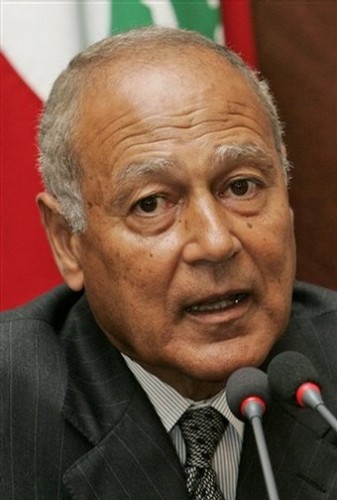
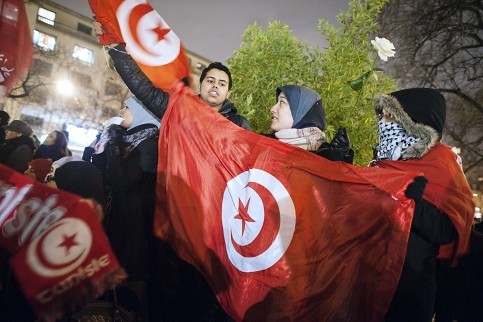
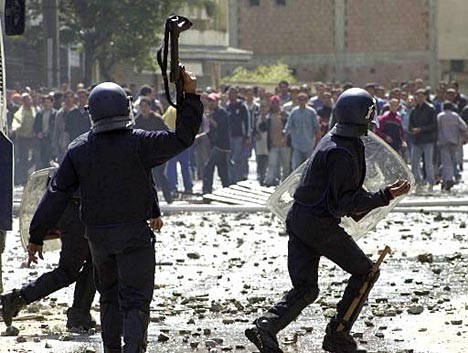

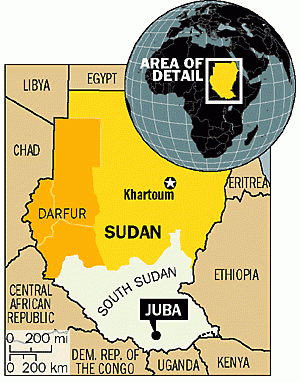 Le 9 janvier prochain, les habitants des provinces méridionales du Soudan décideront, par le biais d’une consultation populaire, s’ils veulent vivre ou non dans leur propre Etat. Il n’y aura pas de surprise : on ne s’attend pas à autre chose qu’à un « oui » massif en faveur de l’indépendance car le Sud animiste et chrétien lutte depuis plusieurs décennies pour se détacher du Nord musulman. Ce n’est qu’en 2005 qu’il fut mis un terme aux violences par la signature d’un Accord de Paix général (APG) ; depuis lors, l’instabilité règne toujours dans cet Etat africain, le plus grand en surface de tout le Continent noir.
Le 9 janvier prochain, les habitants des provinces méridionales du Soudan décideront, par le biais d’une consultation populaire, s’ils veulent vivre ou non dans leur propre Etat. Il n’y aura pas de surprise : on ne s’attend pas à autre chose qu’à un « oui » massif en faveur de l’indépendance car le Sud animiste et chrétien lutte depuis plusieurs décennies pour se détacher du Nord musulman. Ce n’est qu’en 2005 qu’il fut mis un terme aux violences par la signature d’un Accord de Paix général (APG) ; depuis lors, l’instabilité règne toujours dans cet Etat africain, le plus grand en surface de tout le Continent noir. 
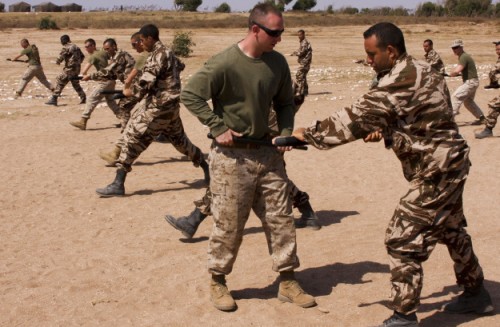


 The end of World War II intensified Morocco's nationalist struggle against French colonial rule, with the establishment of the Istiqlal ('independence') party and the Moroccan Sultan's emergence as a national leader. In this book, Daniel Zisenwine charts the rise of Morocco's leading nationalist party, and illustrates the weakness of Moroccan political parties at the outset of the anti-colonial struggle. While Morocco today faces formidable challenges, its political system remains profoundly influenced by the events charted in this book. Drawing from a wide range of previously unpublished sources, Daniel Zisenwine presents the background to the Istiqlal's establishment, its initial actions and demands, and an extensive discussion of its social activities aimed at mobilizing the Moroccan public during the anti-colonial struggle.
The end of World War II intensified Morocco's nationalist struggle against French colonial rule, with the establishment of the Istiqlal ('independence') party and the Moroccan Sultan's emergence as a national leader. In this book, Daniel Zisenwine charts the rise of Morocco's leading nationalist party, and illustrates the weakness of Moroccan political parties at the outset of the anti-colonial struggle. While Morocco today faces formidable challenges, its political system remains profoundly influenced by the events charted in this book. Drawing from a wide range of previously unpublished sources, Daniel Zisenwine presents the background to the Istiqlal's establishment, its initial actions and demands, and an extensive discussion of its social activities aimed at mobilizing the Moroccan public during the anti-colonial struggle.




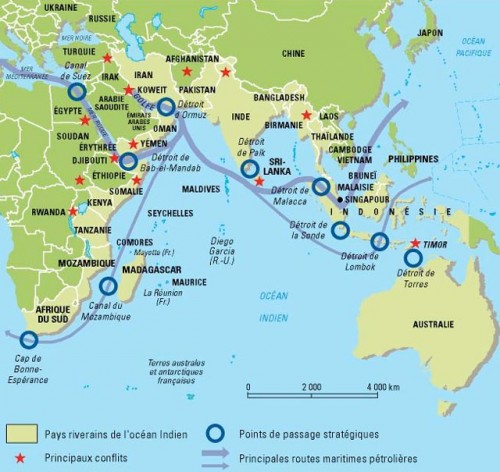

 Zuma scheint zuversichtlich, dass seine Lobbyarbeit erfolgreich sein wird, und er den angestrebten Sprung in den Kreis der BRIC-Staaten schafft. Ein wenig überrascht ist man über das beharrliche Ansinnen des südafrikanischen Präsidenten an einigen Orten aber schon. Denn letztendlich bedarf es einer Aufnahme unter der
Zuma scheint zuversichtlich, dass seine Lobbyarbeit erfolgreich sein wird, und er den angestrebten Sprung in den Kreis der BRIC-Staaten schafft. Ein wenig überrascht ist man über das beharrliche Ansinnen des südafrikanischen Präsidenten an einigen Orten aber schon. Denn letztendlich bedarf es einer Aufnahme unter der 





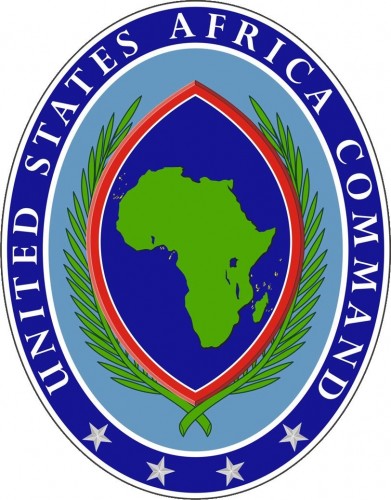
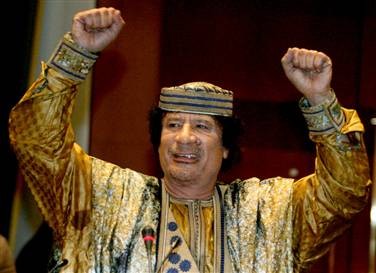




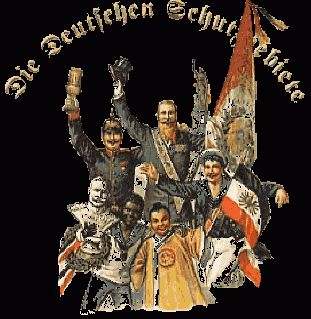 Pendant longtemps le Grand Electeur Frédéric-Guillaume de Prusse n’a connu aucun succès dans ses ambitions d’outre-mer. L’entreprise, qui a consisté à mettre sur pied une société à l’image de la Compagnie néerlandaise des Indes orientales, a échoué face aux réticences anglaises.
Pendant longtemps le Grand Electeur Frédéric-Guillaume de Prusse n’a connu aucun succès dans ses ambitions d’outre-mer. L’entreprise, qui a consisté à mettre sur pied une société à l’image de la Compagnie néerlandaise des Indes orientales, a échoué face aux réticences anglaises.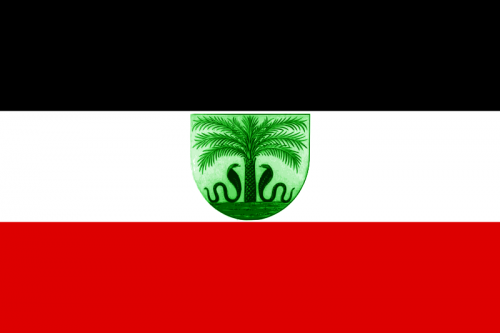
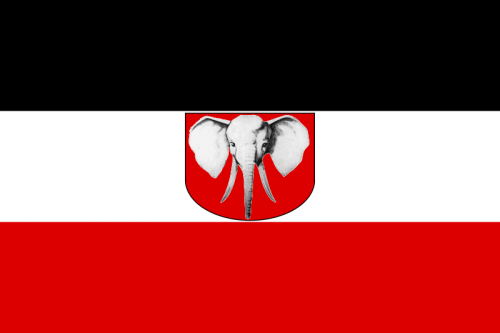
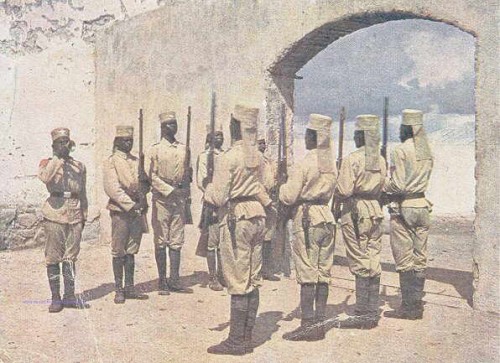 La troupe de protection allemande fut rapidement coupée de toute voie d’approvisionnement et, devant des forces ennemies supérieures en nombre, est obligée de se replier progressivement sur les hauts plateaux du pays, autour de l’actuelle capitale Yaoundé. Les combats acharnés durent jusqu’au début de l’année 1916. A ce moment-là, Allemands et Camerounais n’ont plus de munitions. Les Askaris de l’Empereur Guillaume II engagent le combat contre l’ennemi uniquement avec leurs baïonnettes. A la mi-février, le gros de la troupe de protection gagne un territoire neutre, la colonie espagnole de Rio Muni au Sud du Cameroun. Des dizaines de milliers d’indigènes, fidèles au Reich allemand, les suivent dans cet exil. Dans le Nord du protectorat du Cameroun, à proximité du Lac Tchad, la forteresse de montagne de Maroua tient sans fléchir sous les ordres du capitaine von Raben, grièvement blessé.
La troupe de protection allemande fut rapidement coupée de toute voie d’approvisionnement et, devant des forces ennemies supérieures en nombre, est obligée de se replier progressivement sur les hauts plateaux du pays, autour de l’actuelle capitale Yaoundé. Les combats acharnés durent jusqu’au début de l’année 1916. A ce moment-là, Allemands et Camerounais n’ont plus de munitions. Les Askaris de l’Empereur Guillaume II engagent le combat contre l’ennemi uniquement avec leurs baïonnettes. A la mi-février, le gros de la troupe de protection gagne un territoire neutre, la colonie espagnole de Rio Muni au Sud du Cameroun. Des dizaines de milliers d’indigènes, fidèles au Reich allemand, les suivent dans cet exil. Dans le Nord du protectorat du Cameroun, à proximité du Lac Tchad, la forteresse de montagne de Maroua tient sans fléchir sous les ordres du capitaine von Raben, grièvement blessé. L’Afrique du Sud n’est pas LA « Nation arc en ciel » dans laquelle les déterminismes raciaux ont disparu par un coup de baguette magique, mais l’assemblage de plusieurs peuples réunis par le colonisateur britannique à la suite de nombreuses guerres.
L’Afrique du Sud n’est pas LA « Nation arc en ciel » dans laquelle les déterminismes raciaux ont disparu par un coup de baguette magique, mais l’assemblage de plusieurs peuples réunis par le colonisateur britannique à la suite de nombreuses guerres.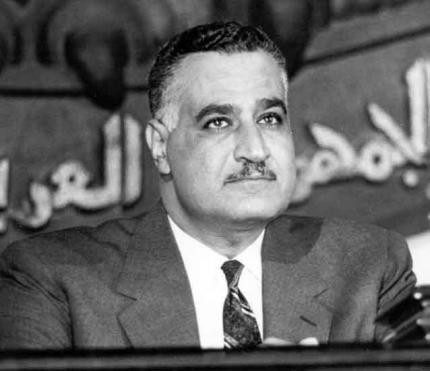 De origen humilde, nacido en 1918 en la provincia de Asiut, Egipto, Gamal Abdel Nasser ingresó en la Academia Militar en 1938, en plena guerra de resistencia.
De origen humilde, nacido en 1918 en la provincia de Asiut, Egipto, Gamal Abdel Nasser ingresó en la Academia Militar en 1938, en plena guerra de resistencia.